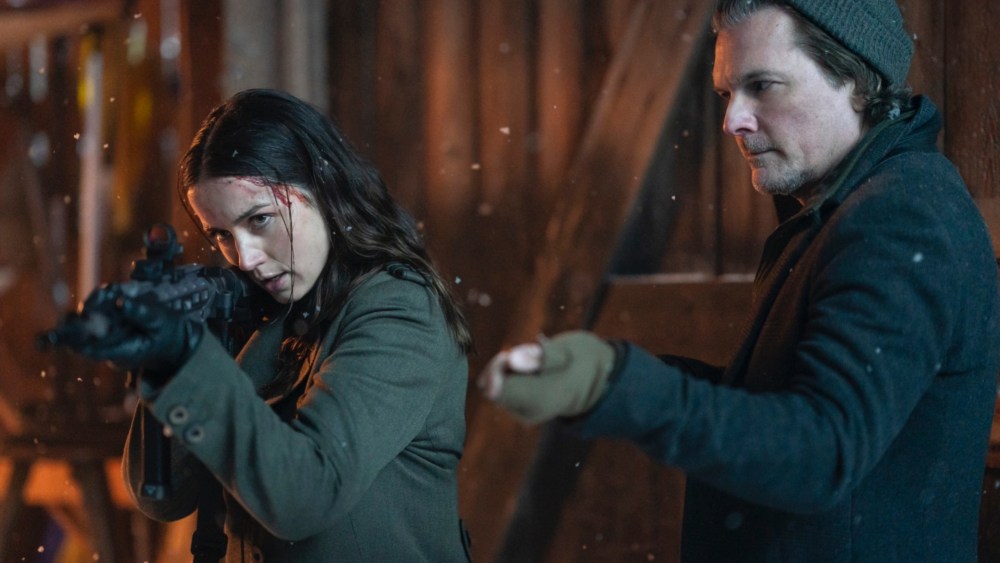Czech Republic Rides Success of New Audiovisual Law, 25% Cash Rebate
Anyone who’s spent time in the “John Wick” universe — or invested countless hours in bringing the blockbuster Lionsgate franchise to life — could imagine the pitfalls awaiting the production team behind the Ana de Armas-starring spinoff “Ballerina,” which hit theaters on June 6.
Predominantly filmed in the Czech Republic, the production was a high-octane thrill-ride where “every second scene was a shoot-’em-up or an explosion or a car chase,” according to Dave Arrowsmith, the film’s supervising art director. That included “very big, complex set builds” — both in Prague’s historic Barrandov Studios and on location — as well as a bit of elbow grease and ingenuity when things didn’t go according to plan.
After an unseasonably warm winter, for example, when temperatures in the Czech countryside failed to drop below zero, Arrowsmith, SFX supervisor Ondrej Nierostek and their team had no choice but to build their own frozen lake from scratch. “The Czech crews, their skill level is massive. You can ask for anything,” Arrowsmith says. “It’s a real can-do attitude. They’re problem-solvers here.”
“Ballerina” is among a host of high-profile international productions to set up shop in the Czech Republic in recent years, including Robert Eggers’ “Nosferatu,” Prime Video’s upcoming “Blade Runner 2099” series, AMC Networks’ “Interview With the Vampire” and Netflix’s German-language historical drama series “The Empress.”
After an uncharacteristic downturn that saw production drop last year — due to both the Hollywood strikes and turmoil with the country’s rebate system, which has since been resolved — industry insiders expect a dramatic rebound.
“It’s definitely back. And it’s growing,” says Pavlína Žipková, head of the Czech Film Commission. “Nobody ever lost faith in the country,” adds David Minkowski, head of production at leading production services outfit Stillking, which is servicing the Prime Video action-adventure series “Ride or Die,” starring Octavia Spencer and Hannah Waddingham. “The government here has always delivered.”
A big reason for such optimism was the launch of a new audiovisual law this year, whose key provisions include an increase in the country’s production incentive from 20% to 25% for live-action projects, as well as a rise to 35% for digital production and animation. The maximum amount that can be claimed per project tripled to nearly $20.5 million.
In addition, the revamped Czech Audiovisual Fund will support a broader range of productions than its predecessor — including films, series, video games and animated projects — while an overhaul to its financing system, which includes a new levy on streaming platforms, is expected to make the fund more sustainable in the future.
Touting the changes as a much-needed move to modernize the sector, Czech Audiovisual Fund CEO Helena Bezděk Fraňková says the new measures “should ensure stable growth and sustainability for independent producers, the development of talent and therefore an increased competitiveness of the Czech audiovisual industry.”
The bump to the rebate — which brings the Czech Republic closer in line to regional competitors such as Hungary and Poland, which both offer 30% incentives — only builds on the industry’s many strengths. That includes world-class studios, top-notch post-production and visual effects services, and a wide range of locations in easy driving distance from Prague, with Kevan Van Thompson, co-founder of Czech Anglo Productions, which serviced the “Ballerina” shoot, describing the Czech Republic as “one of the best countries for location work in Europe.”
The country’s below-the-line talents, meanwhile, set the industry apart, with notable achievements in recent years including Academy Award nominations in production design for set decorators Nora Sopková (“Jojo Rabbit”) and Beatrice Brentnerová (“Nosferatu”), as well as a quartet of Oscar nods for artisans and effects specialists Linda Eisenhamerová, Viktor Prášil, Kamil Jafar and Viktor Müller for “All Quiet on the Western Front.”
Such craftsmanship, Arrowsmith notes, is rooted in traditions passed down from one generation to the next across more than a century of Czech filmmaking. “They’re still bringing on apprentices. They’re still teaching plasterers. They’re still teaching welding and joinery,” he says. “I’ve been all over the world, and it’s one of the best places to work because of that.” In the Czech Republic, he notes, craftspeople are referred to as “golden hands.”
Rory Cheyne, production designer for Skydance’s Apple TV+ sci-fi series “Foundation,” which shot much of its second and third seasons in the Czech Republic, praised his Czech crews for their outside-the-box thinking and their “collaborative way of working.” “They would come up with things that I would have never thought of to add to a set,” he says.
That skillset was put to the test when the Isaac Asimov adaptation arrived in the Czech Republic last year, fresh off a shoot in the Canary Islands where heavy storms washed away one of the production’s coastal sets. With no time to reshoot in the Spanish archipelago, local crews got to work “building the ocean in Czech,” says Cheyne, utilizing a giant water tank and wave machine to create a tidal pool in the parking lot outside their studios in Prague.
“It’s not only about production muscles. It’s also about the incredible creative and technical expertise of the local crew, which makes the difference,” says Tomáš Krejčí, founder of Prague- and L.A.-based outfit Milk & Honey, which serviced the “Foundation” shoot.
Foreign productions, he adds, can still find “incredible value” in a country where “the cost of labor is still far less expensive in comparison with Germany or France or the U.K.”
“It’s not all about [the rebate]. It’s about what else can you bring to the table,” says Minkowski. “There just aren’t many places like Prague.”


